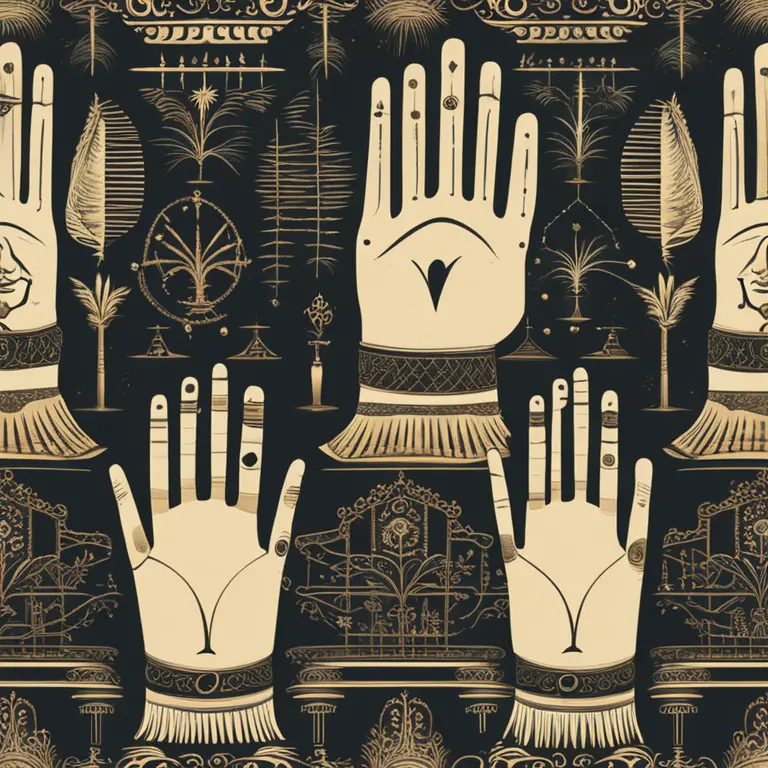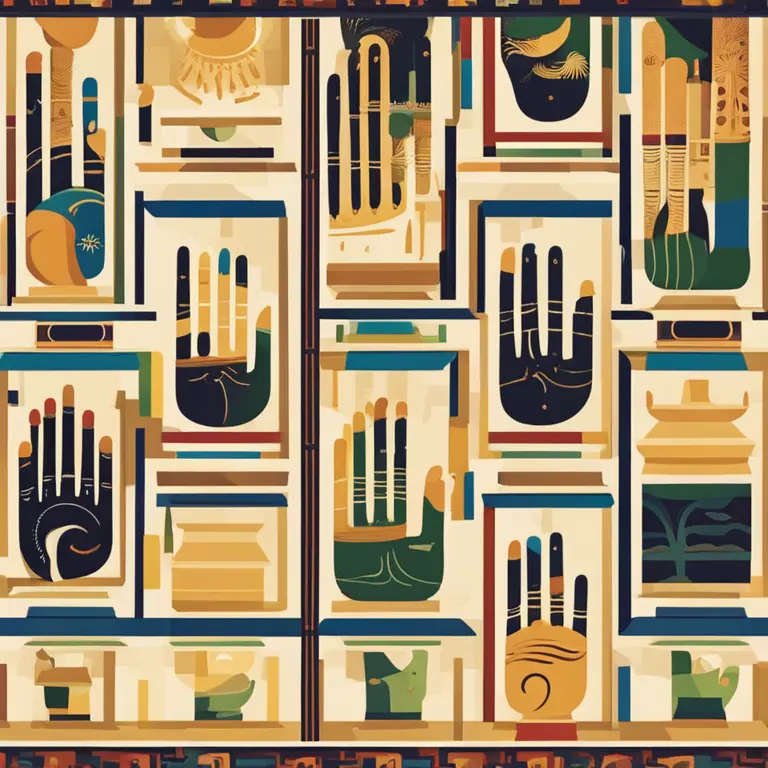
The Begging of Palmistry: A Historical Overview
Delve into the ancient roots of palmistry and discover where this intriguing practice began.
article by Nora Pennington
The Beginnings of Palmistry
Palmistry, also known as chiromancy or palm reading, stands as one of the most ancient forms of divination. Its emergence has been traced back to thousands of years ago, originating from different corners of the world. The art of palmistry is believed to have been practiced among the ancient civilizations of India, China, Tibet, Persia, Egypt, and Babylonia. Distinctive in approach, each culture contributed its own philosophies and interpretations to the reading of palms, thus shaping the diverse palmistry traditions we know today.

Cultural Contributions to Palmistry
The Indian subcontinent is often noted as one of the crucial birthplaces of palmistry, closely tied to the sacred teachings of Hindu astrology. Manuscripts on palmistry have been a part of Vedic scripts, which date as far back as approximately 3,000 to 4,000 years ago. The Chinese, too, have influenced palmistry's evolution, incorporating it with their own traditions such as I Ching and Feng Shui. The practice also holds historical significance in ancient Greek culture, where the philosopher Anaxagoras promoted its study.

Dispersion Through the Ages
Palmistry was not confined to the East for long. As trade and cultural exchanges flourished, so did the dissemination of divination practices. It reached the Western world through the Middle Ages courtesy of travelling merchants and crusaders who brought back knowledge from their encounters with Eastern teachings. By the time of the Renaissance, palmistry was so widespread that it generated both intrigue and skepticism, particularly among the intellectuals and spiritual authorities of the time.

The Victorian Revival
Despite facing periods of decline, especially during medieval times when it was often ostracized, palmistry experienced a resurgence in Victorian England. This era welcomed a renewed interest in the occult and mystical, including palm reading. It was in the 19th century that figures like Captain Casimir Stanislas D'Arpentigny and William John Warner, also known as Cheiro, became notable for their work and writings on palmistry, popularizing it as a tool for character analysis and forecasting.

Modern Palmistry
Today, palmistry is practiced across the globe by enthusiasts and professionals alike. It is considered by many as a way to gain insight into one's personality, potential, and life outcomes. The modern approach often embraces a blend of traditional techniques with psychological aspects. Current practitioners of palmistry continue to evolve the craft, adapting to contemporary values and incorporating new findings into their readings while respecting the art's ancient origins.
Continuing Legacy
Palmistry's origins, rich and scattered across history, indicate a practice that has withstood the test of time. As we navigate the complexities of the modern era, the demand for personal understanding and forecasting remains, ensuring that palmistry lives on as an enlightened guide. The art of palm reading, a timeless relic from the past, continues to intrigue and provide glimpses into the unseen, unfolding its narrative within the palms of our hands.
Published: 1/11/2024
Modified: 1/12/2024
More predictions
Come back here soon to learn more about yourself and your future


Can Palmistry Foresee One’s Demise?
Delve into the contentious debate about whether palmistry can predict the end of life and the ethical considerations of such a claim.


Palmistry: The Historical Overview
Delve into the dawn of palmistry and trace its journey through the corridors of time, uncovering the roots of this ancient practice.


Palmistry Basics: How to Read Your Hand's Secrets
Learn the basics of palmistry with this guide on how to read the lines and shapes of your hands to reveal insights about your personality and future.